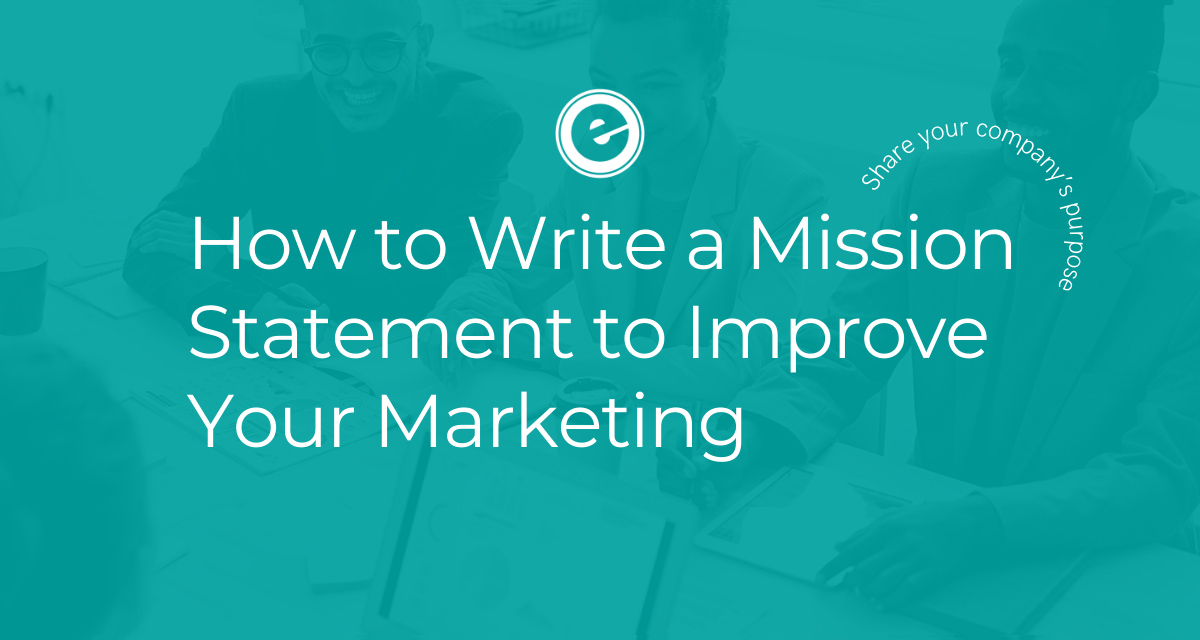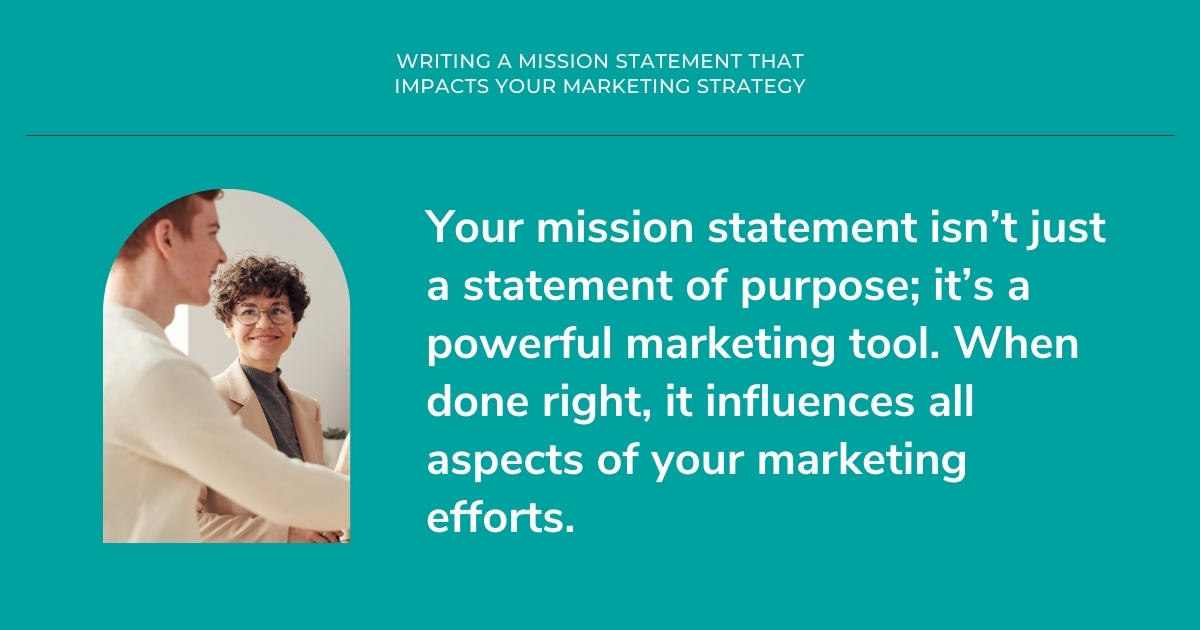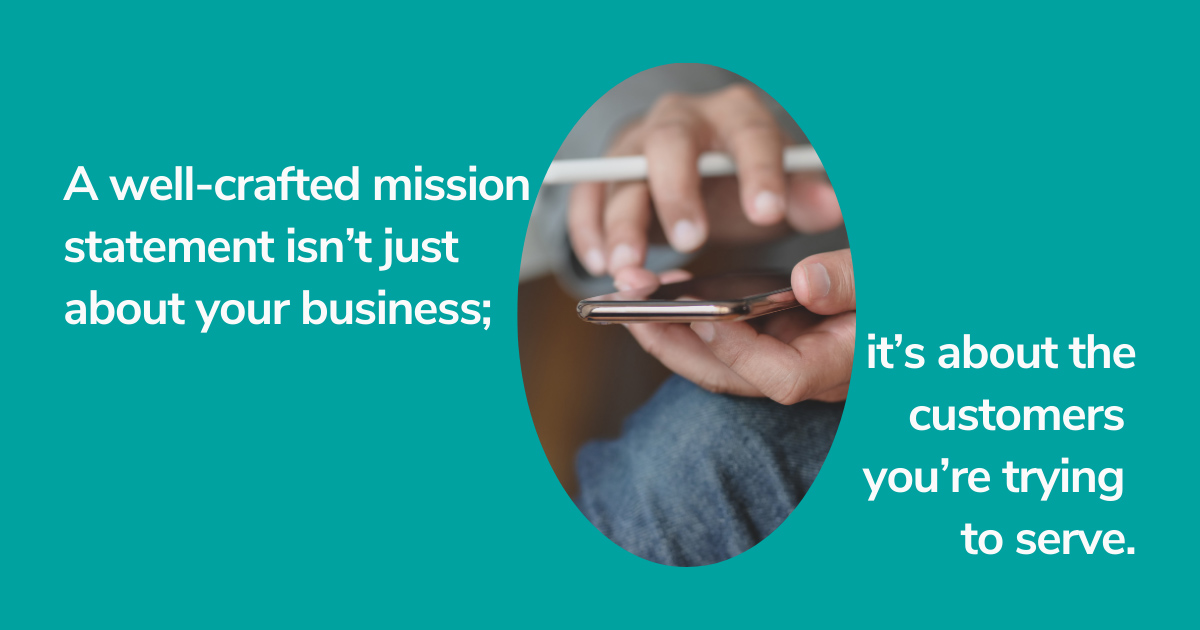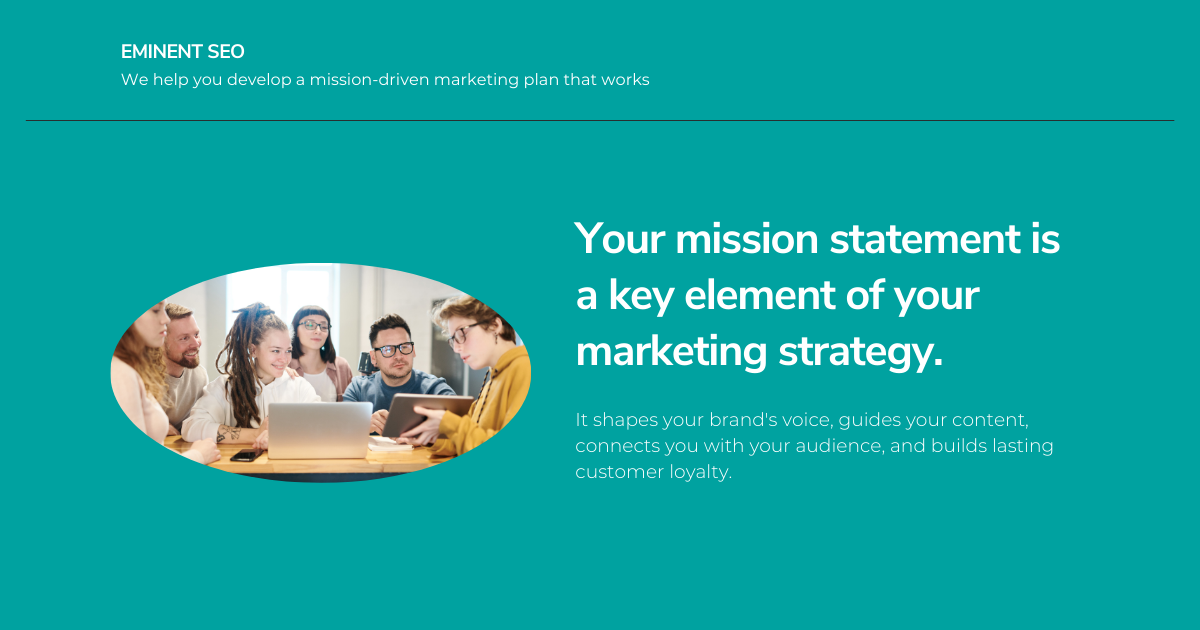A strong mission statement serves as the foundation for your brand. It tells the world who you are, what you do, and why you do it. Whether you’re a business looking to sharpen your messaging or you’re developing a mission statement for your marketing strategy, having a clear and concise mission is essential to success.
In this post, we’ll cover everything from the difference between a mission and a vision statement to specific tips for creating a mission statement that resonates with your audience.
Difference Between Vision and Mission
Before diving into writing your mission statement, it’s essential to understand the difference between a vision statement and a mission statement. Although often used interchangeably, they serve different purposes.
- Mission Statement: Describes what your company does, who you do it for, and how you accomplish it. It focuses on the present, outlining your company’s purpose and core goals.
- Vision Statement: Defines your long-term aspirations and what success looks like for your organization. It focuses on the future and serves as a guiding star for your business’s growth and impact.
For example, if your mission is to “provide affordable, high-quality digital marketing solutions to small businesses,” your vision might be “to become the go-to digital marketing agency for small businesses worldwide.”
Key takeaway:
Your mission is your company’s current purpose, while your vision is the aspirational future you’re working toward.
Vision and Mission Statement Examples
Here are some well-known examples of vision and mission statements to inspire you:
Nike
- Mission: “To bring inspiration and innovation to every athlete in the world.”
- Vision: “To remain the most authentic, connected, and distinctive brand.”
- Mission: “To accelerate the world’s transition to sustainable energy.”
- Vision: “To create the most compelling car company of the 21st century by driving the world’s transition to electric vehicles.”
- Mission: “We’re in business to save our home planet.”
- Vision: “A world where all companies prioritize environmental sustainability.”
As you can see, the mission statement explains what the company does right now, while the vision statement outlines the long-term impact the company wants to make.
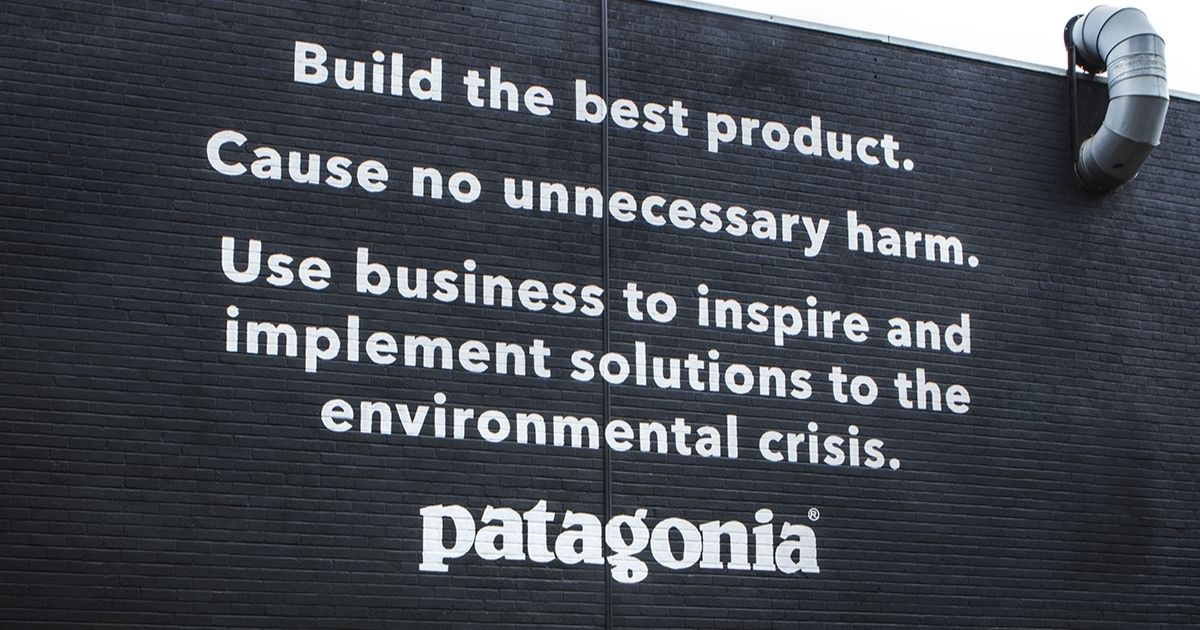
Patagonia Brand Mission
How to Write a Mission Statement
Writing a mission statement doesn’t need to be overly complicated, but it does require thought and intention. A strong mission statement should clearly articulate your brand’s purpose, who you serve, and how you achieve your goals.
Here’s a step-by-step guide to help you craft the perfect mission statement:
1. Identify Your Purpose
Start by asking yourself: Why does your business exist? This should be a broad but clear answer. What is the core reason your company was founded, and what problem are you solving? Your mission should reflect this purpose.
2. Define Your Audience
Next, consider who your business serves. Who are your customers, and how do they benefit from your products or services? The more specific you are, the better your mission statement will resonate with the right audience.
3. Highlight What You Do
Now focus on what your business does. What products or services do you offer? What’s unique about your offerings? Be clear about what your company provides that makes it stand out from the competition.
4. Emphasize Your Values
What core values drive your business? Whether it’s innovation, customer-centricity, or sustainability, make sure your mission statement reflects your company’s key principles. These values should shine through in everything you do.
5. Keep It Concise
A good mission statement is short and to the point—ideally no more than 1-2 sentences. Avoid jargon and make sure it’s easy for anyone to understand.
6. Make It Action-Oriented
Use active language to describe what your company is doing to fulfill its mission. Verbs like empower, create, inspire, and deliver make your mission statement feel dynamic and purposeful.
Example Formula for a Mission Statement:
“We [what you do] for [your target audience] by [how you do it] because [your purpose].”
Example:
How Your Mission Statement Impacts Your Marketing Strategy
Your mission statement isn’t just a statement of purpose; it’s a powerful marketing tool. When done right, it influences all aspects of your marketing efforts—from your brand identity to the content you create and how you engage with your audience.
1. Aligning Your Brand Voice and Messaging
Your mission statement acts as a North Star, guiding your brand voice and messaging across all marketing channels. Whether it’s your website, social media, or email campaigns, your message needs to align with the values and goals outlined in your mission. This consistency builds trust with your audience and ensures that your brand remains cohesive.
For example, if your mission statement emphasizes sustainability, your marketing materials should reflect that with eco-friendly messaging, green product highlights, and educational content on environmental topics.
2. Building Customer Loyalty Through Values-Based Marketing
Modern consumers don’t just buy products—they buy into the values behind the brand. Your mission statement gives you the foundation for values-based marketing, where you promote the beliefs and ideals that drive your company. This can be a powerful way to build long-term customer loyalty, especially if your values align with those of your target audience.
For instance, brands like Patagonia have successfully used their mission to foster a deep emotional connection with their customers by emphasizing environmental sustainability. You can use your mission to create similar connections with your audience, enhancing your overall marketing efforts.
How to Leverage Your Mission Statement in Content Marketing
Your mission statement should serve as the driving force behind your content marketing strategy. It’s not just about what you sell but about why your brand exists and how you can serve your audience.
1. Creating Content That Reflects Your Mission
If your mission is to educate and empower your customers, your content should do just that. Your blog posts, videos, and social media updates should all align with the core values and goals laid out in your mission statement. This creates a consistent narrative that resonates with your audience and builds trust over time.
For example, a company with a mission to simplify personal finance for young adults might create educational blog posts, explainer videos, and downloadable guides that break down complex financial topics in a way that’s easy to understand. Every piece of content reinforces their mission of empowerment through education.
2. Storytelling Through Your Mission
Your mission is a story—it’s about your brand’s journey, why you exist, and what you’re striving to achieve. Use your mission to tell stories in your content marketing. Whether it’s customer testimonials, case studies, or behind-the-scenes content, storytelling humanizes your brand and brings your mission to life.
Great stories also make your mission more relatable and memorable, which can set your content apart from competitors.
Using Your Mission Statement to Define Your Target Audience
A well-crafted mission statement isn’t just about your business; it’s about the customers you’re trying to serve. Understanding your audience’s needs, wants, and values is critical for writing a mission that resonates—and it’s also a powerful tool for shaping your marketing strategies.
1. Aligning Your Mission with Your Audience’s Values
Your mission statement can help you narrow down and focus on the audience that best aligns with your business. It defines not only what you offer but who benefits from it. Once you’ve identified your target audience through the mission statement, your marketing strategies can be designed to engage that specific group.
For example, if your mission focuses on making sustainable fashion accessible to all, you’ll want to tailor your marketing to an audience that values sustainability. You can use this insight to develop campaigns, choose the right platforms, and craft messages that resonate with eco-conscious consumers.
2. Developing Buyer Personas Based on Your Mission
Once your mission is clear, you can build detailed buyer personas that represent your ideal customers. This allows you to target your marketing more effectively. Buyer personas should include demographic information, pain points, motivations, and how your brand addresses their specific needs.
Using your mission statement to develop these personas ensures that every marketing decision—whether it’s a social media ad or a blog post—speaks directly to the audience most aligned with your brand’s goals and values.
Integrating Your Mission Into Your Marketing Campaigns
Your mission statement shouldn’t be a static piece of text that’s buried on your About Us page—it should be an integral part of your marketing campaigns. Here’s how you can bring your mission to life through targeted campaigns:
1. Mission-Driven Social Media Campaigns
Use your mission statement to guide your social media content. Share stories that reflect your core values, create campaigns around important causes, and use your platforms to engage with your audience in a meaningful way. When your followers see that your brand stands for something they care about, they’re more likely to engage, share, and even become loyal customers.
2. Product Launches Aligned with Your Mission
If your mission is centered on innovation or problem-solving, every product you launch should be seen through that lens. For example, a company whose mission is to make technology more accessible to underprivileged communities can tie new product launches to that goal by offering special discounts or even donating products to underserved areas.
Promote these efforts in your marketing materials—this strengthens your brand’s connection with its mission and reinforces it to your audience.
Tips for Using Your Mission Statement in Email Marketing
Email marketing offers a direct channel to communicate with your audience, and integrating your mission into your emails can increase engagement.
1. Reinforce Your Mission in Welcome Emails
Your welcome email is the first impression you make on new subscribers. Including your mission statement in these emails is a great way to introduce your brand’s values from the start. Let your audience know why your company exists and how you can help them.
2. Mission-Driven Calls to Action (CTAs)
Every email should have a clear CTA, and when tied to your mission, it can be even more impactful. For example, if your mission is focused on helping small businesses grow, include a CTA that drives readers to an educational resource or a free consultation. The more your CTA aligns with your mission, the more trust you build.
Creating a Mission-Driven Marketing Funnel
A marketing funnel is the process that leads potential customers from awareness to conversion. Integrating your mission statement into each stage of the funnel can enhance your relationship with prospects and build loyalty over time.
1. Awareness Stage: Mission-Focused Content
In the awareness stage, focus on educating your audience about your mission and what sets your company apart. Use blog posts, social media, and videos to share your brand’s story and values.
2. Consideration Stage: Mission-Driven Offers
At this stage, potential customers are comparing their options. Reinforce your mission by offering lead magnets that align with your values, such as a free resource or consultation tied to your brand’s purpose.
3. Conversion Stage: Mission-Based Decision
When a prospect is ready to make a decision, they should already feel connected to your mission. Ensure your messaging at this stage reflects how your product or service will help them achieve their goals in line with your mission.
Putting Your Mission Statement to Work: Driving Marketing Success
Your mission statement is more than just a guiding principle—it’s a key element of your marketing strategy. By clearly defining your purpose, aligning it with your target audience, and integrating it into your content, campaigns, and communications, you can build a brand that stands out and resonates with your customers.
At Eminent SEO, we don’t just help you create a mission statement. We help you turn that mission into a comprehensive marketing strategy that drives results. If you’re ready to develop a mission-driven marketing plan that works, contact us today and let’s get started.
